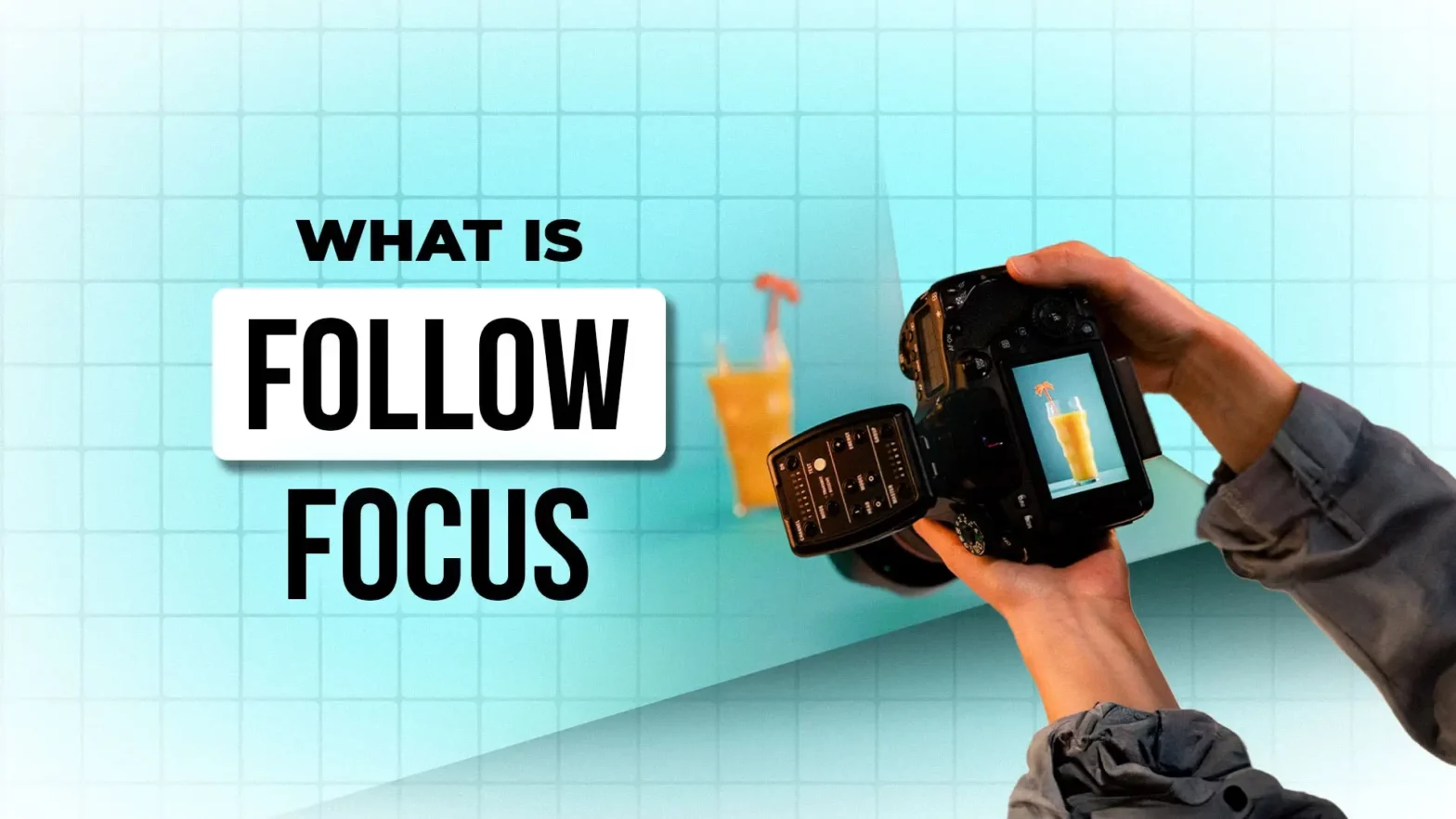Table of Contents
This is 2024 and with budget smartphones featuring high-quality cameras, and autofocus cameras being easily available in the market, a lot of content creators are relying on these for their social media video content. This being the scenario, follow-focus might seem like something that is a blast from the past or a rather rare concept to be used by the creators. However, for some special kinds of content, an advanced follow focus system along with an experienced focus puller can completely alter the videos and act as a game-changer.
If you have some idea about the nitty-gritty of photography, you will know that there are some shots that you absolutely cannot achieve with automatic systems. Whether perfect or not, a human touch can make a great deal of difference and breathe life into photos in ways we can only marvel at. Let us take a closer look at how and why this follow focus system is a good idea and how it can help you make a difference while creating content.
What is Follow Focus?
The follow focus system is generally used in professional filmmaking as autofocus systems are not usually smooth enough to adjust when the camera is already rolling. It can be defined as a manual add-on that is used to operate and manipulate the lens of the camera for pulling focus and keeping the subject sharp and precise. The lens’s focus ring is manually rotated with the help of a hand controller with gears and this is known as the follow focus.
Sometimes, if there is enough budget, there might even be a dedicated focus-puller on the set. Maintaining focus throughout the shop would then be his sole job. The follow focus ensures that you don’t have to fiddle with the lens and this way you can avoid unnecessary jitters or shakes.
Why Do You Need a Follow-Focus System?
Follow focus systems can prove to be helpful in professional videography for a variety of key reasons. It not only improves the quality of the video, but also helps to shoot in tricky situations and avoid the hassles which usually entail in such cases. So if you are wondering what is follow focus and when do we use it, here’s your reply:
1. Improved Videography
As you might already know, when it comes to autofocus systems, they work better with still photography, but not so much for videography. Even if you happen to own a high-end Sony, Canon or Nikon DSLR or even a top-of-the-the-line ARRI cinema camera, we can never emphasize enough that manual focusing is always more precise and predictable when compared to autofocusing.
If you’re unsure of what camera to buy, take a look at our ‘Camera Buying Guide‘ to help you out!
2. Shooting With a Shallow Depth of Field
While working with shallow depths of field, a lot of cinematographers prefer to keep the apertures wide while shooting. However, it is also true that wide apertures tend to have a low tolerance range when working with sharp focus. This is where the follow focus can come into the picture and help you get the picture-perfect focus every time you shoot.
3. Smoother Workflow
Manual focusing also usually calls for precision and time. In case the filming schedule is rigid and doesn’t leave much space for variations, follow focus will let you achieve your desired focus fast and with a lot of precision, at the same time allowing focus shifting with ease.
Do Professionals Use Follow Focus?
Irrespective of what you are shooting – be it a high-end commercial, a film, or follow focus can always be helpful. Modern features like auto focus will not be able to achieve the level of clarity and precision that manual focus can.
Well, it’s not that auto focus is bad and it really does a good job for still photos. However, cinematic lenses are designed in a way in which follow focus turns out to be the most useful. So the next time you watch an IMAX movie, you can be sure that it was shot using follow focus.
How Do You Attach a Follow Focus, the Different Parts of it?
The entire system of follow focus contains a number of key parts. Here’s a guide to knowing what each of the parts do:
1. Rod Clamp/Rail
This is a wrench-looking rectangular part that helps in attaching the follow focus to the camera. The two holes in the clamp should slot into a rod and a baseplate system connected to the camera.
2. Arm
This is square in shape and works towards attaching the rod to the follow focus.
3. Focus Gear
As the name suggests, these gears look like those of a bicycle. You can adjust the gear with a focus knob and that will help move the lens gear ring.
4. Lens Gear Ring
It is basically a circle fitting with your lens. If you are opting for a modern follow focus system, you have to attach it by placing the lens on a flat surface with its face down. After that, you can just slide down the ring, pushing a little here and there when needed.
4. Focus Knob
This is a knob meant for pulling focus and is the handwheel portion of the focus control system.
5. White Disk
This is placed near the focus knob. An erasable marker pen can be used for noting different focus points to keep the shot in precise focus.
What is a Follow Focus Whip?
This is nothing but a short stick with the help of which, any one other than the cameraman – the focus puller for example, can pull focus. Maximum modern follow focus systems have a hole or a slot for follow focus whips.
What are Hard Stops in Follow Focus?
Hard stops are those extra pieces of equipment which can be attached to the follow focus knob. However, some of the advanced follow focus models come with built-in hard stops. Once you have successfully locked in, the hard stops will stop your follow focus from moving around. This restriction in movement can create a tight, precise field where focus can be easily pulled.
Do You Need a Wireless Follow Focus?
As with other wireless gadgets, a wireless follow focus system also does what it is expected to – it provides more freedom than the traditional ones. You can control it remotely, even without a focus whip. The contact between the camera and the camera person is further reduced, minimizing the risks of bumps and shakes to a great extent.
Should You Use Follow Focus in Your Content?
Well, it is not fair to say that you cannot create good content without follow focus. Also, a good quality follow focus system like the Genus GL G-SFOCDSLR or the SmallRig MagicFIZ can cost you somewhere around a ground. So yes, it is somewhat costly.
Ideally, follow focus is not really beginner-friendly and more suited to professional filmmaking. If you are a beginner, you may find it somewhat overwhelming with all the equipment and the processes. However, once you get a hang of it, and start tracking your content the correct way, you will definitely see a positive difference.
Types of Video Creators Who Would Need a Follow Focus System?
As we have already established, experienced professionals are the ones who benefit the most from a follow focus system.
DoPs and Focus Pullers Working In Complex Environments
If you are shooting something short, even low budget ones with multiple people involved in it, you have to be someone who doesn’t just manually adjust lenses.
You have to gain more experience with bigger cameras and equipment.
Beginner Filmmaker
You can indeed choose autofocus over manual focus if your work allows it. However more specific and crafted shots like mini-documentaries, travel films etc will reach a new height or precision when done with a follow focus system.
Event Filmmakers
Events like weddings and birthdays are generally chaotic with so many unexpected movements, blockage of view etc. The auto focus system will fall flat in such situations and only manual focus will allow you to have control over such situations and create yourself more number of usable photos.
What are Some Pros and Cons of Follow Focus System?
Let’s sum up with the basic pros and cons of the system we talked so much about.
Pros:
- Focus transitions are precise and Smooth
- One does not have to touch the lens, so disturbances are reduced to a minimum
- If there are multiple takes, it allows for repeatability of focus.
Cons:
- The camera setup becomes extremely bulky
- The high-end models can be incredibly expensive,
- If you want to use it effectively, you need to recalibrate and all times.
As technology has become more and more advanced, we have come across the digital forms of follow focus systems, accompanied by remote control as well as automated focus transitions based on pre-set parameters, which increase the overall clarity and versatility.

